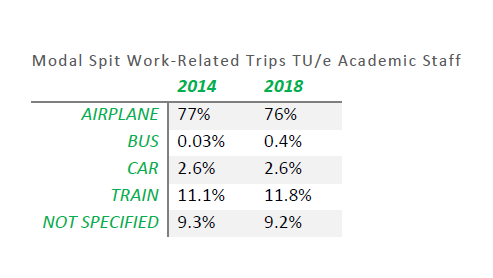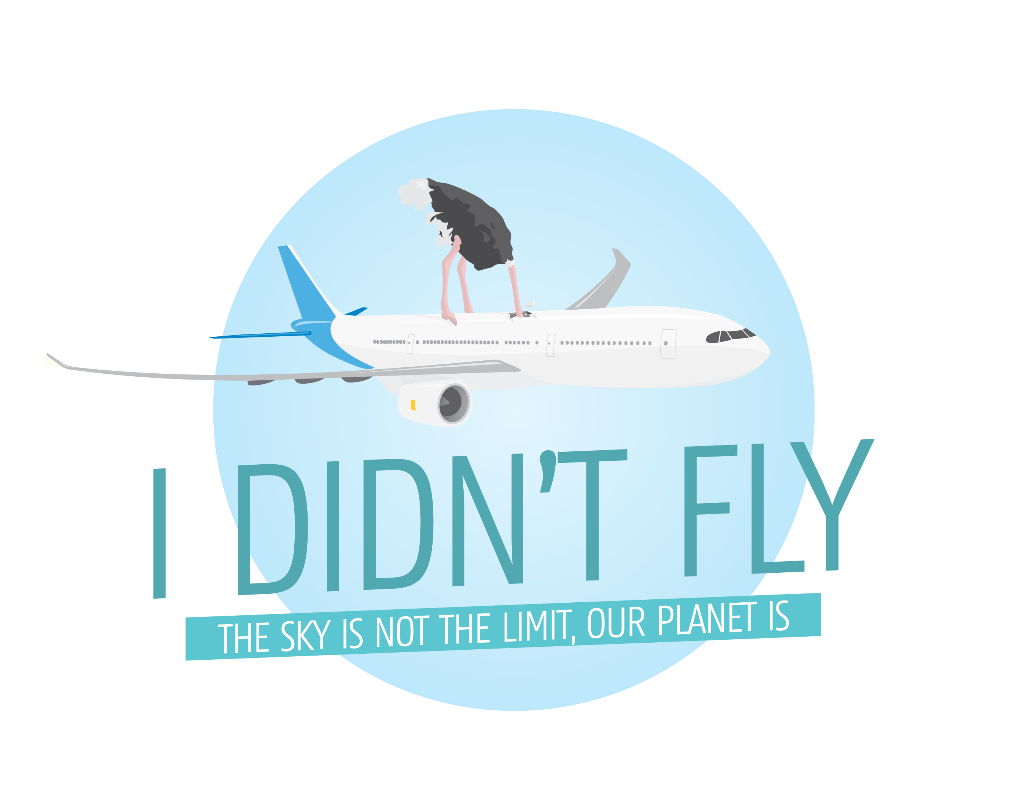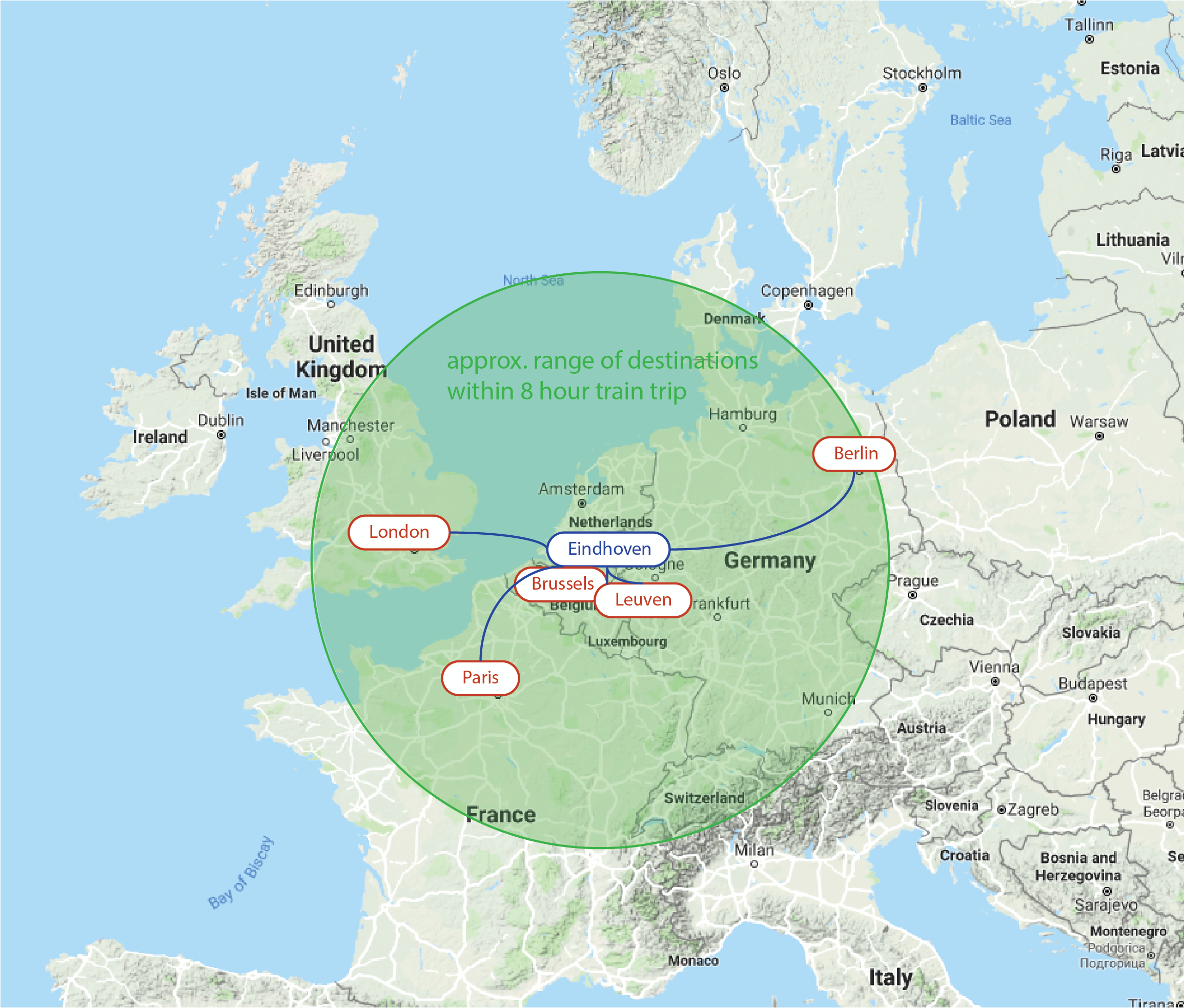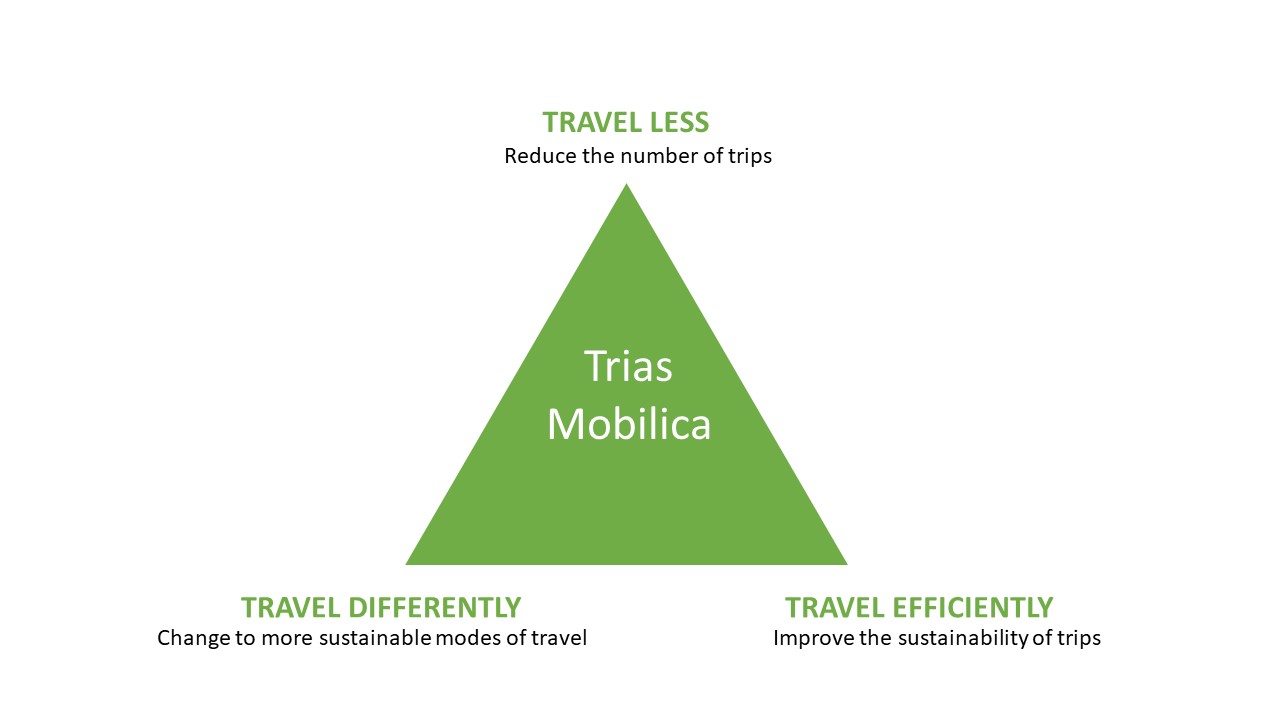Planning for Conference Trips? Make it Greener
“Planning for conference trips? Make it greener.” With this slogan we, a group of academics concerned about our carbon footprint, kicked off our Low Carbon Travel Initiative at Eindhoven University of Technology. This is a first step in making TU/e work travel more sustainable. This blog is a first attempt of providing insight in our travel behavior and how we (you included) can curb high carbon travel.
We Are Not Alone
We are a group of academics concerned about our carbon footprint. We would like to make some positive changes, starting with the way we travel for work. The good news is that we are not alone. Hundreds of academics from Dutch, Flemish and other European universities are questioning their travel practices. Among other research universities the universities of Ghent, Leiden, Leuven, Utrecht, and Wageningen already implemented policies to curb high carbon travel and encourage low carbon alternatives like the train.
We know that these concerns are shared by many of our colleagues, but we also feel a more systemic change is needed if we want to collectively reduce high carbon travel. Reflecting on our footprint as academics, we see international travelling for conferences and fieldwork as inherent to our work, but at the same time an impactful practice of academic life.
Now then, how do TU/e academic travel to conference and fieldwork locations? As academics we are skilled in asking questions and analyzing data. And that is exactly what we did. We analyzed travel logs of TU/e staff in order to gain insight in how we travel, and map the low hanging fruit in our efforts of reducing high carbon travel.
How Do TU/e Academics Travel?
How to gain insight in TU/e staff travel choices? Right, looking at staff travel expenses. Firstly, this data learns us that between 2014 and 2018 the total number of work related trips gradually increased from 3,308 to 4,299 trips per year, mostly for conferences and fieldwork. Secondly, a breakdown of these totals reveals that the vast majority of these trips is made by airplane. Circa 76 percent of the total work trips by TU/e staff outside the Netherlands is done by airplane[1].

So What?
What do these numbers mean? Well, 3,267 airplane trips (2018) equals 1,069,341 kg of CO2 emissions[2], which equals the emission of 6,000,000 kilometers by diesel car. Not only could we bridge the distance between planet Earth and the moon (384,000 km) 16 times (yes, by diesel car), but in order to compensate, we would also need a forest of 50,000 trees to absorb all this carbon. We could go on and on with baffling comparisons. However, these might only distract from our core message:These numbers could and should be reduced!
Besides TU/e wide policies to encourage low carbon travel, we feel we can already make a change by travelling less, travelling different, and travelling more efficient. Among many practical solutions like video- and tele-conferencing, choosing low carbon trains over high carbon planes is presented by the aforementioned universities as an important intervention.
 Ghent University asks staff that choose a low carbon alternative for conference travelling to let their fellows know they refrained from flying by adding this “I Didn’t Fly” logo to their presentation.
Ghent University asks staff that choose a low carbon alternative for conference travelling to let their fellows know they refrained from flying by adding this “I Didn’t Fly” logo to their presentation.
Change Is Already There
In their Klimaatbrief academics of Leiden University raise concerns about academic work travel behavior, rallying support of all Dutch universities. Reducing high carbon travel, the Klimaatbrief claims, can only be realized by
“Drastically reducing flights, with insightful targets, including through exercising critical consideration before travelling, using alternative modes of transport, and investing in climate-friendly alternatives and behavioural change to enable remote participation at academic consultations, conferences and exchanges.”[i]
In similar vein, vice dean Gerard Govers of KU Leuven says to encourage videoconferencing as an alternative to flying, and encourage academic staff to choose trains over planes for shorter travel distances. “Naar Londen of Parijs hoef je echt niet te vliegen. De trein is sneller, goedkoper, comfortabeler en milieuvriendelijker. We publiceren lijsten van steden die je veel beter aandoet met de trein dan met het vliegtuig. Voor een aantal bestemmingen zal het vliegtuig geen optie meer zijn in het aanbod van de reisagent, voor bestemmingen die iets verder liggen zullen we de trein als alternatief suggereren.”[ii]
Ghent University implemented its comprehensive “Duurzaam Klimaatbeleid.” Encouraging low carbon travel alternatives, the university color coded common work travel destinations within an eight hour travel radius. “Green cities” are accessible by bus or train in less than six hours. Flying to these cities is prohibited and only under exceptional circumstances staff can request permission to fly. “Orange cities” are cities within an eight hour travel distances from Ghent, to which flying is not preferred.[iii]
In the Netherlands similar initiatives start to unfold. Wageningen University prohibits staff to fly to European cities like Brussels, Paris, and Stuttgart that are well accessible by train. Leiden University made the train the default mobility options for work travels below six hours travel time.[iv]
At TU/e such policies do not (yet) exist. This Low Carbon Travel Initiative is a first step in that direction, and an encouragement to TU/e staff to take that first step with us.
What Radius Are We Talking About?
To illustrate what destinations fall within an eight hour travel radius from the TU/e campus, we made a map indicating what common work travel destinations of TU/e staff fall within this radius. A disclaimer: not all travel destinations within this radius are reachable within eight hours, because the lack of a railway connection, not being near a mobility hub etc. However, this map does illustrate well that five common work travel destinations of TU/e staff are actually within this radius and well accessible by train.
In 2018 top five work travel destinations of TU/e staff within the eight-hour radius outside the Netherlands were Brussels (262 trips), London (116 trips), Paris (107 trips), Berlin (91 trips), and Leuven (90 trips). In most of these cases, the way to go was by airplane. (Please note: travel expense data most often only mentions used modes and destinations, not places of departure. Further data collection, and adjustment of the TU/e travel expense format, is therefore needed.)

Most common TU/e work travel destinations within a radius of approx. 8 hours by train from Eindhoven
In our collective efforts of reducing high carbon travel at TU/e, choosing trains over planes to reach these destinations would already be a big gain. We ask for a TU/e wide policy that encourages more sustainable work travel, but also ask TU/e academics to think about how and why they travel. To kick-start change, we developed three rules of thumb, we call the Trias Mobilica.
Please, Explain This Trias Mobilica
In our search for greener work travel we follow the logic of the Trias Mobilica, which comes down to the following guiding principles. Firstly, travel less by reducing our number of trips. Secondly, travel differently by changing to more sustainable modes of travel. And thirdly, travel more efficiently. You can read more about the Trias Mobilica on this page (Low Carbon Travel webpage).

These guiding principles help us make more sustainable travel choices and delineate the focal points of this low carbon travel imitative. Hopefully these principles help you to personally reflect on your conference and fieldwork trips, and start a conversation with your colleagues.
Please let us know what you or your group is doing to encourage low carbon travel. You can share your reflections on our website where some colleagues have already shared their experience with sustainable travel choices.
References
[1] With assumption starting position either from Amsterdam (for flight outside Europe, Flights not served by Eindhoven Airport, and Amsterdam Centraal station if the total hours of train ride is shorter if starting from Amsterdam) or Eindhoven (for flight route served by Eindhoven Airport and Eindhoven station if the total hours of train ride is shorter if starting from Eindhoven).
[2] Based on Boeing 737-400 fuel consumption per km for economy passenger
[i] https://klimaatbriefuniversiteiten.nl/open-letter-to-our-universities/
[ii] https://www.leuven2030.be/verhalen/ku-leuven-gaat-voor-duurzaam-reisbeleid
[iii] https://www.ugent.be/nl/univgent/waarvoor-staat-ugent/duurzaamheidsbeleid/projecten/duurzaamreisbeleid
[iv] https://resource.wur.nl/nl/organisatie/show/WUR-wil-vliegen-aan-banden-leggen.htm; https://www.universiteitleiden.nl/nieuws/2016/03/universiteit-wordt-duurzamer-en-studenten-en-medewerkers-milieubewuster;
© Copyright Low Carbon Travel Initiative - lowcarbon.travel[at]tue.nl
WELCOME
Keep track of the progress of our Low Carbon Travel initiative on this website.
Please read and support our Manifest!
You can also read about low carbon travel experiences, and find resources to take action yourself. Checkout the Blogs & Resources tab! In future posts we will report on our progress,
Hope to see you again!

Currently 19 people signed the Manifest!
(last update 31/10/2019 09:39)
UPDATES
New blog posted! (13 November 2019)
A new blog post by our colleague Wolmet, who shares her "Tales of a non-flying researcher"
First blog posted! (16 October 2019)
Today, our first blog got posted! Our low-carbon-travel colleague Natascha shares her experiences when "train-ing to Italy".
Going public! (10 October 2019)
Today, the initiative went public! You will find us on TV screens and posters at the TU/e. The Cursor also wrote a nice article about the initiative.